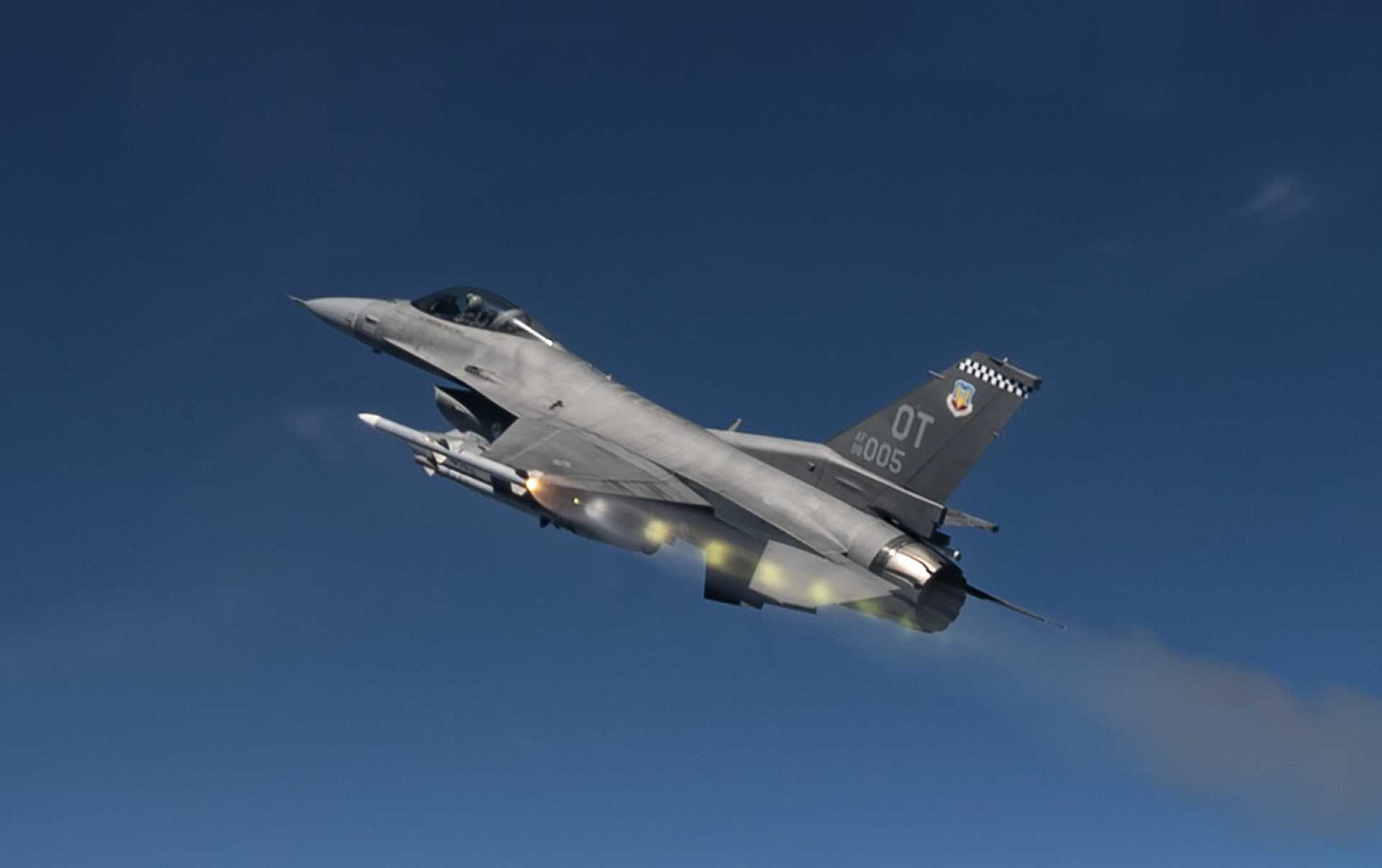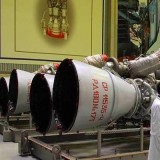Breaking News: US-Japan to Co-Produce AMRAAM Air-to-Air Missiles Amid Rising Threats from China and North Korea

{loadposition bannertop}
{loadposition sidebarpub}
According to information published by the Japanese Press Agency Kyodo News on March 30, 2025, Japan and the United States have announced the early launch of a joint coproduction program for the AIM-120 Advanced Medium-Range Air-to-Air Missile (AMRAAM). The announcement was made during a meeting in Tokyo between U.S. Defense Secretary Pete Hegseth and Japanese Defense Minister Gen Nakatani. The move comes in response to growing regional security challenges and aims to further strengthen the long-standing military alliance between the two countries through deeper defense industrial cooperation.Follow Army Recognition on Google News at this link
A U.S. Air Force F-16 fighter jet fires an AIM-120 AMRAAM medium-range air-to-air missile during a live-fire test. (Picture source: U.S. DoD)
The agreement reflects the increasingly deepened U.S.-Japan defense cooperation amid a rapidly evolving regional security environment marked by China’s growing military assertiveness and North Korea’s continued development of nuclear weapons and ballistic missile systems. As both nations seek to strengthen their deterrence posture, the early launch of the AIM-120 AMRAAM air-to-air missile coproduction initiative represents a major leap forward in bilateral defense industrial integration and operational readiness.
The AIM-120 AMRAAM (Advanced Medium-Range Air-to-Air Missile), developed by U.S. defense contractor Raytheon, is among the most capable beyond-visual-range (BVR) air-to-air missiles in service. It features active radar homing, allowing pilots to engage targets without continuous guidance after launch — a “fire-and-forget” capability that is critical in high-threat environments. The latest variant, AIM-120D, offers enhanced range exceeding 160 kilometers, improved kinematic performance, GPS-assisted mid-course navigation, and advanced electronic counter-countermeasures (ECCM). These features provide reliable engagement against highly maneuverable targets, even in contested environments saturated with electronic warfare.
The missile’s compact form factor allows internal carriage on stealth aircraft such as the F-35 Lightning II, preserving low observability. AMRAAM is compatible with a wide range of platforms, including the F-15, F-16, F/A-18, and Eurofighter Typhoon, all of which are part of many allied fleets. For Japan, the missile’s integration is particularly relevant to its F-15J fleet — currently undergoing modernization — and its growing inventory of F-35A and F-35B fighter jets.
Under the new coproduction framework, Japanese defense contractors are expected to collaborate with Raytheon in the production of key components, final assembly, and system integration, supported by a technology transfer agreement. This will enhance Japan’s domestic defense manufacturing capacity and reduce reliance on overseas supply chains, ensuring sustained missile availability in times of crisis.
The agreement aligns with Japan’s broader strategic shift toward developing an autonomous and resilient defense industrial base. In recent years, Tokyo has increased its defense budget and revised longstanding policies to facilitate greater participation in joint arms development, procurement, and export.
The AIM-120 AMRAAM missile coproduction also underscores Japan’s substantial reliance on U.S. military technology and platforms across its Self-Defense Forces. The Japan Air Self-Defense Force (JASDF) operates a large fleet of U.S.-origin platforms including the F-15J and Mitsubishi F-2 (based on the F-16), in addition to the F-35A and F-35B, which are being delivered as part of Japan’s plan to acquire over 140 fifth-generation aircraft. These platforms are already integrated with U.S. missile systems, including the AMRAAM.
Beyond air combat, the Japan Ground Self-Defense Force and Maritime Self-Defense Force also maintain a wide array of U.S.-made or co-developed systems. These include Patriot PAC-3 surface-to-air missile batteries, the Aegis Combat System deployed on Japan’s advanced destroyers, the upcoming Aegis Ashore missile defense system, AH-64D Apache and UH-60 Black Hawk helicopters, and interoperable naval assets designed to operate jointly with the U.S. Navy’s 7th Fleet.
A robust network of U.S. military bases across the Japanese archipelago, including Kadena Air Base, Yokosuka Naval Base, and Misawa Air Base reinforces the U.S.-Japan alliance. These facilities serve as operational hubs for both U.S. and Japanese forces, supporting real-time intelligence sharing, joint training, and rapid deployment capabilities.
During the March 30, 2025, meeting, the two governments also reaffirmed their intention to upgrade bilateral command and control frameworks to facilitate more seamless operational coordination between the U.S. military and Japan Self-Defense Forces. These enhancements are part of an ongoing modernization effort aimed at enabling faster, more agile joint responses in crisis scenarios.
The two sides additionally highlighted the strategic importance of strengthening military posture in Japan’s remote southwestern islands, particularly in light of their proximity to Taiwan and contested areas in the East China Sea. Reinforcements in surveillance, air defense, and rapid deployment capabilities in these areas are among the alliance’s top defense priorities.
Further details regarding the AIM-120 AMRAAM air-to-air missile coproduction timeline, industrial partners, and initial production targets are expected to be revealed during follow-up bilateral defense talks in the coming months. The agreement marks a significant milestone in advancing the U.S.-Japan defense partnership and reflects their shared commitment to maintaining peace, security, and technological edge in the increasingly contested Indo-Pacific region.

{loadposition bannertop}
{loadposition sidebarpub}
According to information published by the Japanese Press Agency Kyodo News on March 30, 2025, Japan and the United States have announced the early launch of a joint coproduction program for the AIM-120 Advanced Medium-Range Air-to-Air Missile (AMRAAM). The announcement was made during a meeting in Tokyo between U.S. Defense Secretary Pete Hegseth and Japanese Defense Minister Gen Nakatani. The move comes in response to growing regional security challenges and aims to further strengthen the long-standing military alliance between the two countries through deeper defense industrial cooperation.
Follow Army Recognition on Google News at this link
A U.S. Air Force F-16 fighter jet fires an AIM-120 AMRAAM medium-range air-to-air missile during a live-fire test. (Picture source: U.S. DoD)
The agreement reflects the increasingly deepened U.S.-Japan defense cooperation amid a rapidly evolving regional security environment marked by China’s growing military assertiveness and North Korea’s continued development of nuclear weapons and ballistic missile systems. As both nations seek to strengthen their deterrence posture, the early launch of the AIM-120 AMRAAM air-to-air missile coproduction initiative represents a major leap forward in bilateral defense industrial integration and operational readiness.
The AIM-120 AMRAAM (Advanced Medium-Range Air-to-Air Missile), developed by U.S. defense contractor Raytheon, is among the most capable beyond-visual-range (BVR) air-to-air missiles in service. It features active radar homing, allowing pilots to engage targets without continuous guidance after launch — a “fire-and-forget” capability that is critical in high-threat environments. The latest variant, AIM-120D, offers enhanced range exceeding 160 kilometers, improved kinematic performance, GPS-assisted mid-course navigation, and advanced electronic counter-countermeasures (ECCM). These features provide reliable engagement against highly maneuverable targets, even in contested environments saturated with electronic warfare.
The missile’s compact form factor allows internal carriage on stealth aircraft such as the F-35 Lightning II, preserving low observability. AMRAAM is compatible with a wide range of platforms, including the F-15, F-16, F/A-18, and Eurofighter Typhoon, all of which are part of many allied fleets. For Japan, the missile’s integration is particularly relevant to its F-15J fleet — currently undergoing modernization — and its growing inventory of F-35A and F-35B fighter jets.
Under the new coproduction framework, Japanese defense contractors are expected to collaborate with Raytheon in the production of key components, final assembly, and system integration, supported by a technology transfer agreement. This will enhance Japan’s domestic defense manufacturing capacity and reduce reliance on overseas supply chains, ensuring sustained missile availability in times of crisis.
The agreement aligns with Japan’s broader strategic shift toward developing an autonomous and resilient defense industrial base. In recent years, Tokyo has increased its defense budget and revised longstanding policies to facilitate greater participation in joint arms development, procurement, and export.
The AIM-120 AMRAAM missile coproduction also underscores Japan’s substantial reliance on U.S. military technology and platforms across its Self-Defense Forces. The Japan Air Self-Defense Force (JASDF) operates a large fleet of U.S.-origin platforms including the F-15J and Mitsubishi F-2 (based on the F-16), in addition to the F-35A and F-35B, which are being delivered as part of Japan’s plan to acquire over 140 fifth-generation aircraft. These platforms are already integrated with U.S. missile systems, including the AMRAAM.
Beyond air combat, the Japan Ground Self-Defense Force and Maritime Self-Defense Force also maintain a wide array of U.S.-made or co-developed systems. These include Patriot PAC-3 surface-to-air missile batteries, the Aegis Combat System deployed on Japan’s advanced destroyers, the upcoming Aegis Ashore missile defense system, AH-64D Apache and UH-60 Black Hawk helicopters, and interoperable naval assets designed to operate jointly with the U.S. Navy’s 7th Fleet.
A robust network of U.S. military bases across the Japanese archipelago, including Kadena Air Base, Yokosuka Naval Base, and Misawa Air Base reinforces the U.S.-Japan alliance. These facilities serve as operational hubs for both U.S. and Japanese forces, supporting real-time intelligence sharing, joint training, and rapid deployment capabilities.
During the March 30, 2025, meeting, the two governments also reaffirmed their intention to upgrade bilateral command and control frameworks to facilitate more seamless operational coordination between the U.S. military and Japan Self-Defense Forces. These enhancements are part of an ongoing modernization effort aimed at enabling faster, more agile joint responses in crisis scenarios.
The two sides additionally highlighted the strategic importance of strengthening military posture in Japan’s remote southwestern islands, particularly in light of their proximity to Taiwan and contested areas in the East China Sea. Reinforcements in surveillance, air defense, and rapid deployment capabilities in these areas are among the alliance’s top defense priorities.
Further details regarding the AIM-120 AMRAAM air-to-air missile coproduction timeline, industrial partners, and initial production targets are expected to be revealed during follow-up bilateral defense talks in the coming months. The agreement marks a significant milestone in advancing the U.S.-Japan defense partnership and reflects their shared commitment to maintaining peace, security, and technological edge in the increasingly contested Indo-Pacific region.




